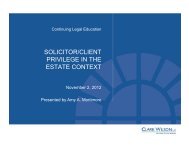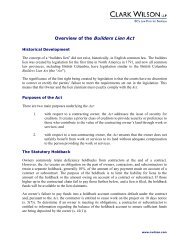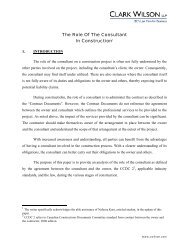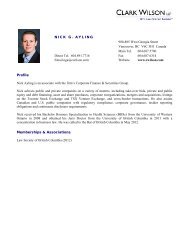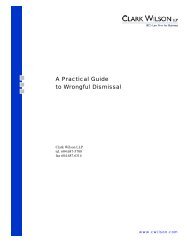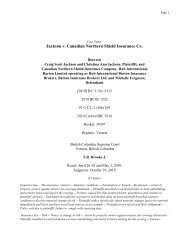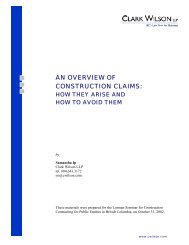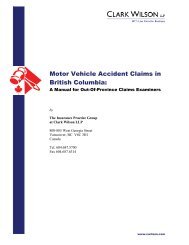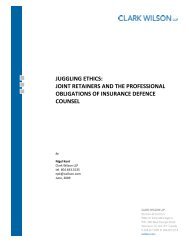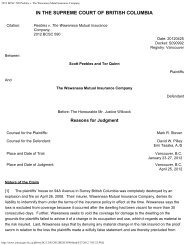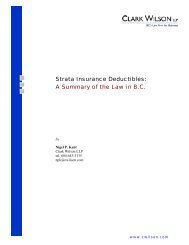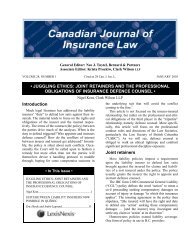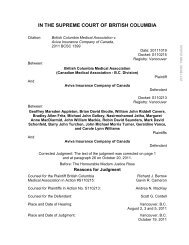Create successful ePaper yourself
Turn your PDF publications into a flip-book with our unique Google optimized e-Paper software.
Kruger Products Limited v. First Choice Logistics Inc. Page 12<br />
camera had been shut off, being “sucked back onto the radiator screen.” He also<br />
confirmed that the cooling fan had been operating at maximum speed during the test<br />
and that accordingly, he had not made any observations “as to how burning paper<br />
debris and burning embers would move around in the engine compartment if the<br />
engine and the cooling fan were being operated at less than maximum speed.”<br />
Further, the engine had not been under load when the tests were carried out, nor<br />
had the Forklift been driven around “in piles of paper debris to see what would<br />
happen”. Significantly, the radiator had been cleaned out before each test. Counsel<br />
for the defendants successfully objected to counsel’s question to Dr. Colwell:<br />
I suggest to you, Doctor, that given these variables, you would have been<br />
surprised if you had seen fire propagate outside the lift truck?<br />
2013 BCCA 3 (CanLII)<br />
This witness, not having been called to provide expert evidence, was not asked to<br />
comment on the “exhaust pipe” theory ultimately adopted by the trial judge.<br />
[24] The trial judge said he accepted Dr. Colwell’s evidence. In his analysis:<br />
... I accept the evidence of Jeff Colwell, a professional engineer, that paper,<br />
once inside the body of a forklift, is drawn upwards towards the radiator with<br />
significant force so that the paper cannot get past the radiator and outside the<br />
vehicle unless manually forced past the radiator. I also take into account that<br />
there was no evidence of fire damage within the body of the Forklift after the<br />
Fire. I find that it would not have been possible for paper to be drawn into the<br />
Forklift, ignited and then expelled from the Forklift. [At para. 55; emphasis<br />
added.]<br />
For the same reason, he also rejected the defendants’ submission that the Toyota<br />
third parties were responsible for the fire ‒ although it was not necessary for the<br />
Court to decide the point. The judge rejected the notion that paper had been:<br />
... drawn into the body of the Forklift as a result of the negative air pressure<br />
created by the exhaust fan and that, after coming into contact with an<br />
exposed portion of the exhaust pipe, caught fire and escaped from the body<br />
of the Forklift. I am satisfied that this theory is disproven on the evidence due<br />
primarily to the inability of paper to escape once it has entered the body of<br />
the Forklift and the inability of ignited paper to move past the radiator fan to<br />
outside of the Forklift. [At para. 55; emphasis added.]



